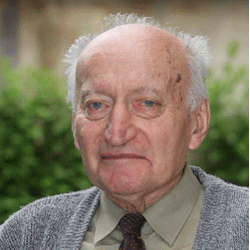In the period after WWII, György Székely was one of the most influential medievalists in Hungary. A survivor of the Holocaust, he graduated as a legal historian in Budapest in 1946 and soon became a university lecturer and researcher at the Institute of History of the Hun-garian Academy of Sciences. There, he worked in close collaboration with linguists, historical geographers, art historians and archaeologists, remaining open to these approaches throughout his academic career. His original qualification in the field of legal studies also had a definitive impact on his approach to history.
He held high-ranking positions in the university administration at a very young age, was vice-dean, dean and vice-rector several times, and in 1956, acted as Rector playing a crucial role in steering the university in and after the months following the revolution. He held the post of professor from 1956, was elected corresponding member of the Academy in 1973 and became a regular member in 1985. He was appointed Director General of the Budapest History Museum between 1982 and 1987, but he continued teaching at the university after his official retirement as well, a teaching career that lasted from 1948 until 2014. He taught several generations of historians and was always ready to participate in discussions of the dissertations of his younger colleagues. He was created an honorary doctor at his home university, the Eötvös Loránd University, in 2005.
György Székely successfully combined the activities of a professor and an academic adminis-trator. His research activity comprised a long period from Late Antiquity through the Middle Ages to the Early Modern period, covering an exceptionally broad variety of fields. His bibli-ography, compiled for his eightieth birthday, consisted of 434 items, many of these pub-lished abroad, in foreign languages. He published articles on state foundations at the turn of the first Millennium; Pope Gregory VII; Byzantine-Hungarian relations; the Hussite move-ment; the defensive system raised against the Ottomans; the history of the peasantry and the peasant uprising of 1514, and the Reformation. The most central themes in his oeuvre include the history of university foundations in medieval Hungary and the peregrination of Hungarian students at foreign universities, as well as the history of towns in the Middle Ages and Early Modern times. The conclusions of his studies regarding settlement continuity in Pannonia between the Roman and medieval periods; on comparative urban history from a Central European perspective, as well as on urban economy still have many valid points today.
He did his best within the limited possibilities of the 1960s and 1970s to increase the inter-national connectedness of medieval studies in Hungary through his participation in confer-ences, at meetings, academic visits and exchange. His research results qualified him to be-come member of the International Commission for the History of Universities and the Inter-national Commission for the History of Towns. In this latter commission, he was the longest-serving ordinary member, from its foundation in 1955 until his death, altogether 61 years! He had particularly close contacts to Polish, Czech, Italian, French, German and Swedish historians, and was thoroughly acquainted with the source materials and historiographies of these countries. Consequently, he played a pioneering role in investigating East-Central Europe as a region in its own right, seeking for the roots and manifestations of its structural coherence.
His death marks the end of an epoch in Hungarian historiography. He was an active participant in academic life and in historical research, first and foremost in the field of urban history, until the end of his life.
Balázs Nagy – Katalin Szende

